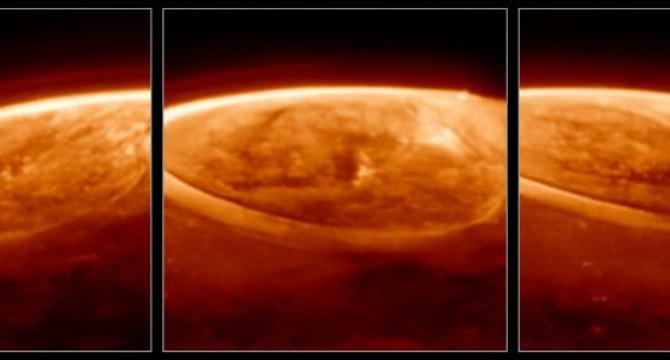Earthsky
4d
362

Image Credit: Earthsky
Jupiter’s auroras caught on film. Watch here!
- The James Webb Space Telescope captured Jupiter's auroras, which are brighter and larger than Earth's, thanks to the planet's strong magnetic field and interactions with charged particles.
- Auroras on Jupiter are caused by interactions with charged particles from the sun and its moon, Io, along with its powerful magnetic field that accelerates particles to excite the atmosphere.
- Webb's sensitive observations revealed fast-varying auroral features on Jupiter, providing new insights into how the planet's upper atmosphere heats and cools.
- The team of scientists led by Jonathan Nichols observed unusual bright emissions in the auroras, prompting further investigation into discrepancies between Webb and Hubble Space Telescope data.
- The scientists intend to conduct more observations using Webb and compare the data with NASA's Juno spacecraft to understand the mysterious bright emissions on Jupiter.
- The study of Jupiter's auroras aims to deepen our understanding of the planet's atmosphere and space environment and explore the unique phenomena observed in the energetic auroras.
- These findings were published in the peer-reviewed journal Nature Communications and showcase the remarkable capabilities of Webb in capturing dynamic phenomena like Jupiter's auroras.
- The video captured by Webb offers a mesmerizing view of Jupiter's auroras flickering and popping at impressive speeds, shedding light on the dynamic nature of these cosmic light displays.
- The research on Jupiter's auroras highlights the scientific importance of studying such phenomena to unravel the mysteries of our solar system and the diverse interactions within it.
- Witnessing the auroras on Jupiter through the lens of Webb's Near-Infrared Camera provides a unique perspective on the captivating light shows occurring on our solar system's largest planet.
Read Full Article
21 Likes
For uninterrupted reading, download the app